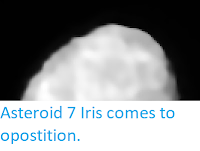Asteroid 2022 CE passed by the Earth at a distance of about 209 400 km (0.55 times the average distance between the Earth and the Moon, or 0.14% of the distance between the Earth and the Sun), slightly after 2.40 am GMT on Tuesday 1 February 2022. There was no danger of the asteroid hitting us, though were it to do so it would not have presented a significant threat. 2022 CE has an estimated equivalent diameter of 5-15 m (i.e. it is estimated that a spherical object with the same volume would be 5-15 m in diameter), and an object of this size would be expected to explode in an airburst (an explosion caused by superheating from friction with the Earth's atmosphere, which is greater than that caused by simply falling, due to the orbital momentum of the asteroid) between 40 and 26 km above the ground, with only fragmentary material reaching the Earth's surface.
2022 CE was discovered on 2 February 2022 (the day after its closest approach to the Earth) by the Asteroid Terrestrial-impact Last Alert System (ATLAS) search program's HKO Telescope on Mount Haleakala, Hawai'i. The designation 2022 CE implies it was the fifth asteroid (asteroid E; in numbering asteroids the letters A-Z excluding I, are assigned numbers from 1 to 25, with a number added to the end each time the alphabet is ended, so that A = 1, A1 = 26, A2 = 51, etc., which means that E = 5) discovered in the first half of February 2022 (period 2022 F; the year being split into 24 half-months represented by the letters A-Y, with I being excluded).
2022 CE has a 542 day (1.48 year) orbital period, with an elliptical orbit tilted at an angle of 2.09° to the plain of the Solar System which takes in to 0.96 AU from the Sun (96% of the distance at which the Earth orbits the Sun, and slightly inside the orbit of the planet Venus) and out to 1.64 AU (164% of the distance at which the Earth orbits the Sun, and outside the orbit of the planet Mars). It is therefore classed as an Apollo Group Asteroid (an asteroid that is on average further from the Sun than the Earth, but which does get closer). Asteroid 2021 CE is calculated to have last passed the Earth in February 2019, is predicted to make another close pass of the Earth in November 2032. The asteroid also makes occasional close passes of the planet Mars, with the last thought to have happened in July 1982 and the next predicted in September 2035.
See also...



Follow Sciency Thoughts on Facebook.
Follow Sciency Thoughts on Twitter.





